Did you know that Logistics robots are the fastest growing form of service robots as more and more logistics businesses are leveraging robotics?
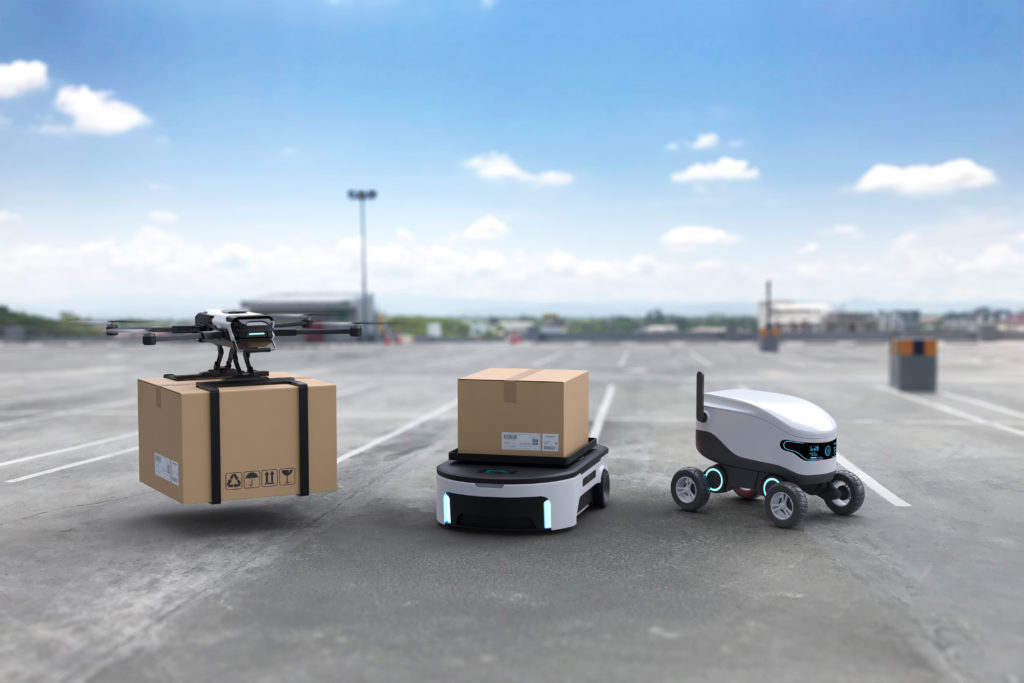
Statistics have shown that warehouse labor expenses can be reduced to up to 70% by automating the process of storing and transferring goods as they make their way through the supply chain. They’re frequently used to arrange and carry items in warehouses and storage facilities.
Logistics robots can work around the clock, seven days a week. When it comes to conducting terminal management operations and routine duties like receiving, handling, preparing, loading, and unloading goods, they are incredibly efficient and offer high levels of uptime when compared to manual labor.
Innovative logistic robotic companies have worked hard over the last two decades to combine AI and machine learning, resulting in substantial efficiency and profitability for logistics businesses using robots. In fact, companies deploying logistics robotics in their RORO terminals, have witnessed their market’s noticeable rapid growth.
What types of robots are used in Logistics?
1. Aerial Drones in Ports and Terminals
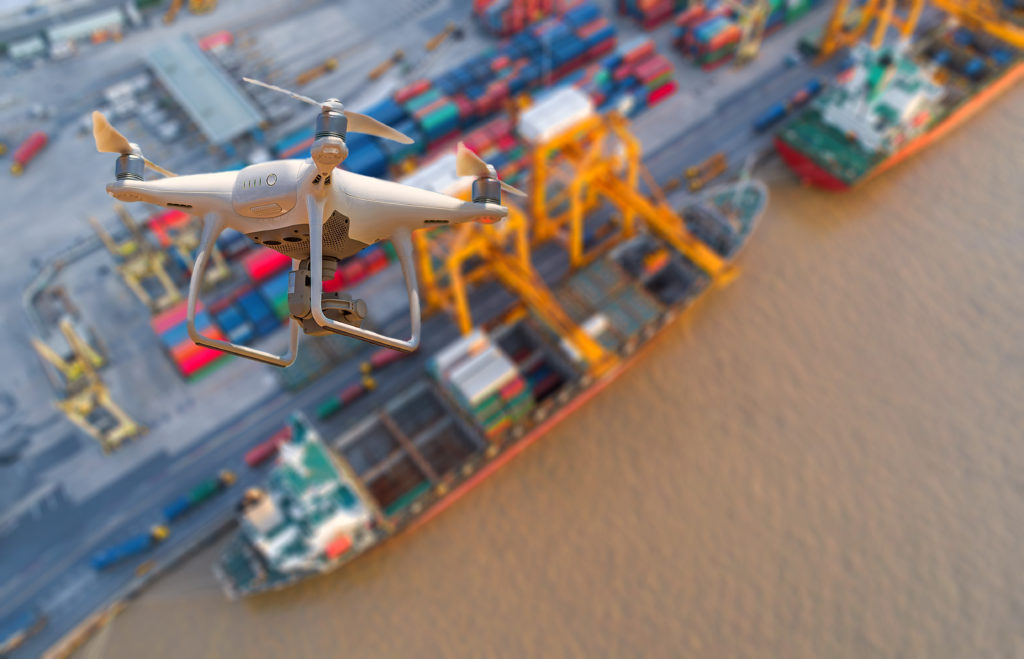
Drone technology plays a critical role in the development of smart ports and terminals. Drones that can scan QR codes and relay RFID signals are now in use at a variety of ports, terminals, and maritime facilities across the world.
Drones equipped with an RFID system acquire power wirelessly from scanners and then read RFID tags from tens of meters away while identifying their locations. As a result, terminal managers are able to log inventories far more effectively than they could if they had to manually scan and enter barcodes and serial numbers. They can recognize items in a terminal and allow greater control over the location of cargo units and inventory, potentially saving logistics businesses billions in lost revenue due to faulty inventory records by providing precise, real-time inventory tracking data.
2. Robotic vehicles in Ports and Terminals
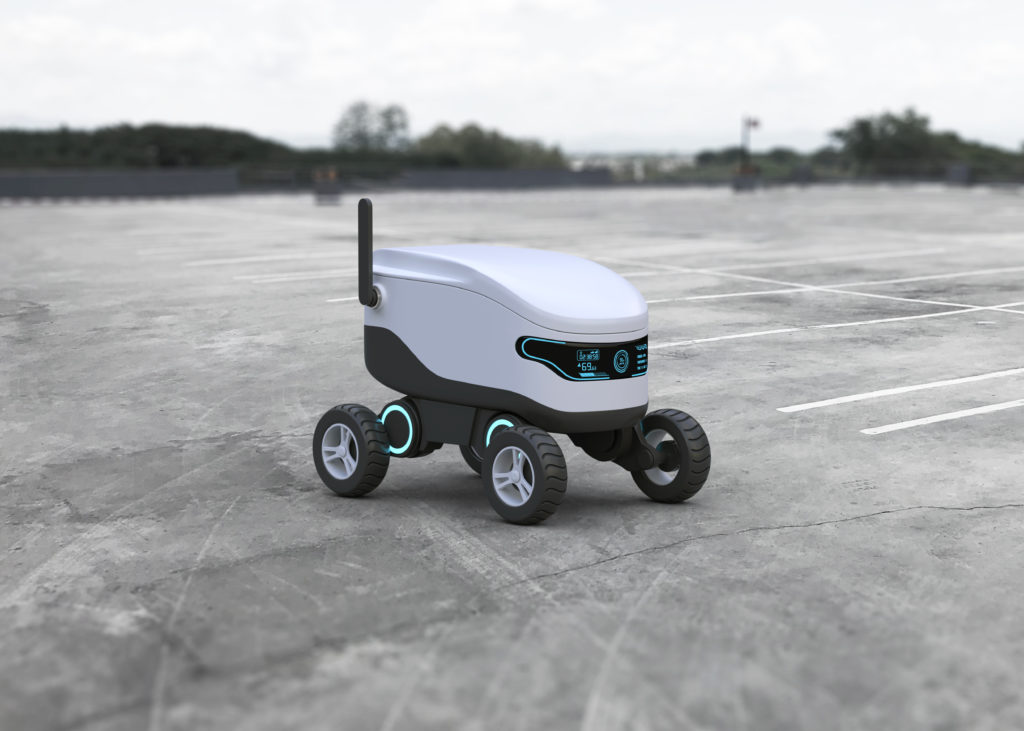
The robotic vehicles are miniature, autonomous cars that can move about without the need for a driver or a remote control. In addition, they incorporate QR code and RFID signal reading systems that allow them to follow pathways through a terminal while avoiding barriers and recognizing goods. These robots are ideal for larger terminal yard distances because they reduce the time spent by workers just moving from one place to the next.
3. Automated arms in Warehouses
New handling equipment can now automate picking, sorting, and palletizing of goods. For example, robotic arms with sensors can assess an object’s shape and structure, pick up products, close and seal boxes, and transport packages from one shelf to another.
4. Automated Guided Vehicles for goods transportation
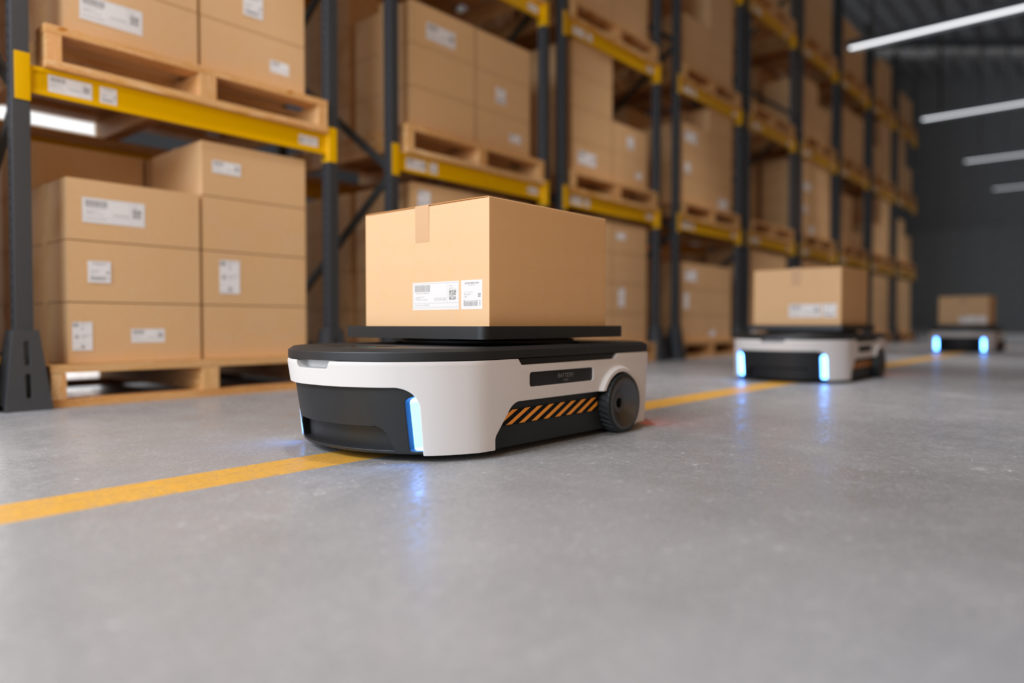
Automated Guided Vehicles (AGVs) can move and carry material loads from one location to another in a safe and efficient manner. AGVs are automatic machines that do not require human monitoring or intervention.
What are the benefits of deploying robotics in Terminal Logistics?
- According to Roland Berger’s research that focuses on the influence of robotics on logistics until 2025, there will be a 20 percent to 40 percent decrease in logistics expenses and a 25 percent to 70 percent increase in productivity.
- Robots perform low-value, repetitive chores so people may collaborate and invest in high, non-automatable jobs.
- Any unit or object on a terminal can be automatically and quickly identified by a robot.
- By scanning and recognizing every container or cargo going in and out of the port to the vessel, robotics may automate the receiving and loading procedure.
- Each robot’s setup is customizable for various jobs and levels of complexity
- Remote connections with equipment allow to watch and monitor the robot’s activities.
- Robotics can enable staff adaptability.
- By taking over risky duties, robotic logistics enhances the workers safety.
- Robotic logistics may generate considerable revenues while also lowering warehouse expenses by decreasing human mistakes.
What are the uses of Logistics robotics in a RORO Terminal?
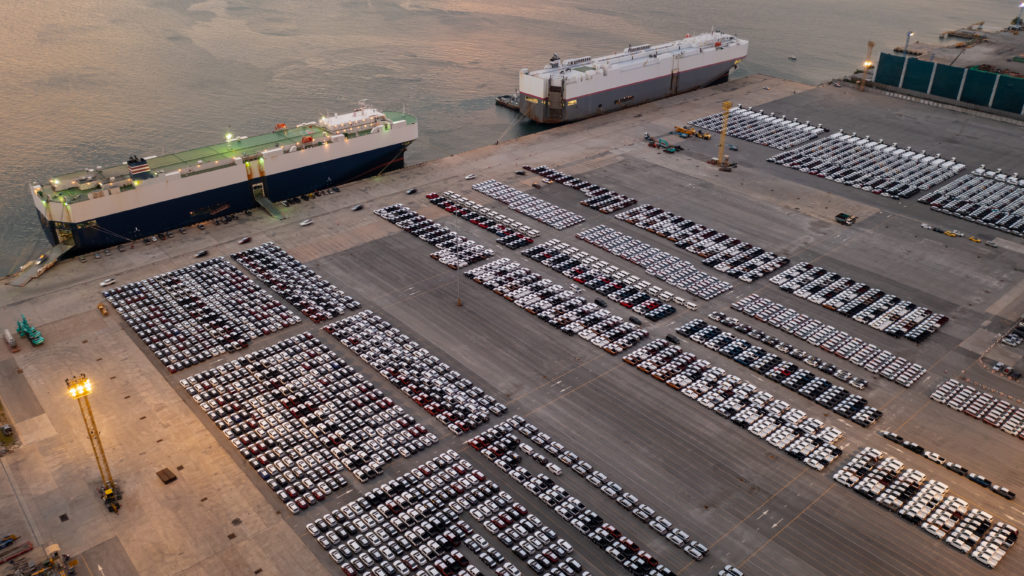
1. Real-time tracking and accurate location
Drones provide logistics teams with precise and up-to-date inventory information in real time, reducing the time spent on repeated review chores, as well as mistakes and expenses. These robots, combined with machine learning and AI, aid in the organization and optimization of the terminal’s area.
2. Inventory Control
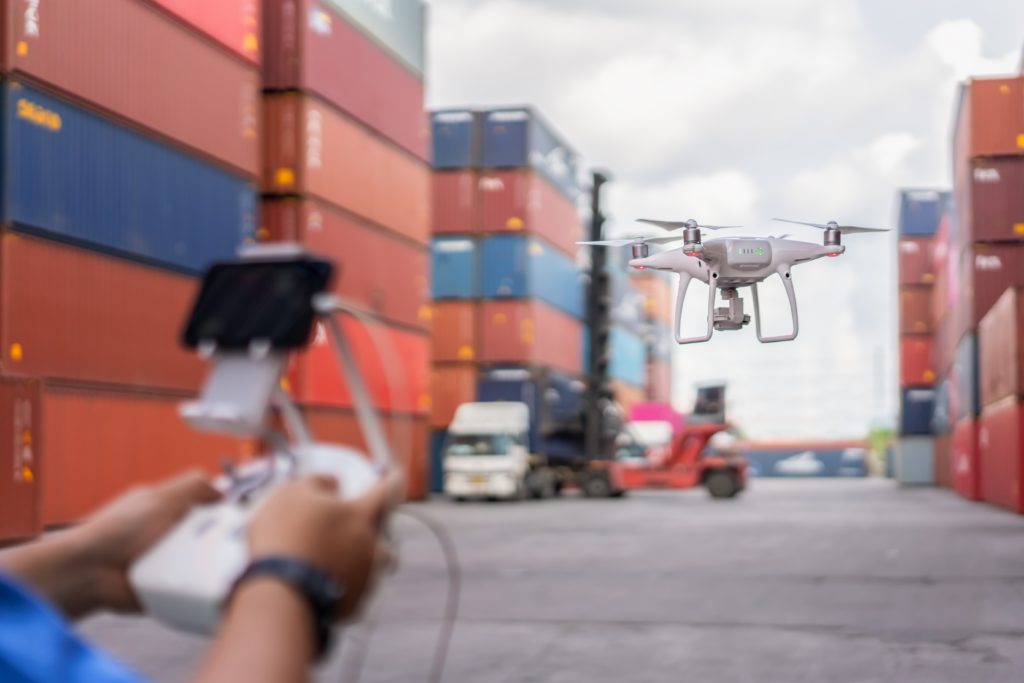
The goal to eliminate the human aspect inherent in the current system, which is particularly prone to mistakes, drove the automation of inventory control and management procedures in terminals. Drones and autonomous cars, as mentioned previously, can go through all cargo units and relay RFID signals or scan barcodes while performing quick and repetitive duties. Furthermore, the system could be implemented in large terminal yard distances with too many cargo units. These robots can also assist in the detection of stock exceptions and the prompt correction of inventory and stock record mismatches.
3. Tally, robot!
Tally, a Robotics inventory management bot, can scan RFID chips or barcodes to identify every unit that enters or exits a vessel and record data.
4. Type and make/model identification
Image recognition provides the ability for a robot to recognize the specifications of the cargo such as the type, make and model, plate number, size, shape, colors, etc…
5. Physics and dimensions measurement
A robot’s sonar or laser sensors can measure the cargo’s physical dimensions (length, height, width).
6. Cargo’s damage detection
Image recognition enables the recording of the cargo’s visual condition at the time of receiving and detecting any noticeable damage.